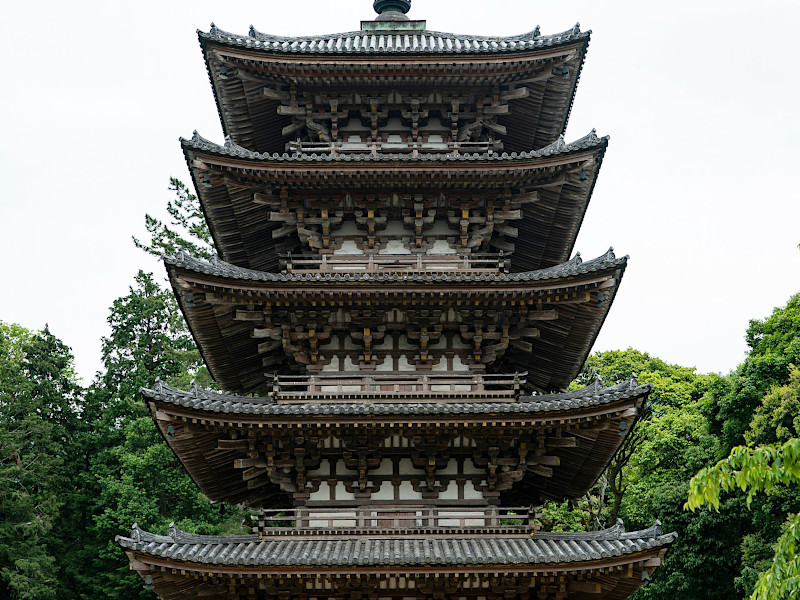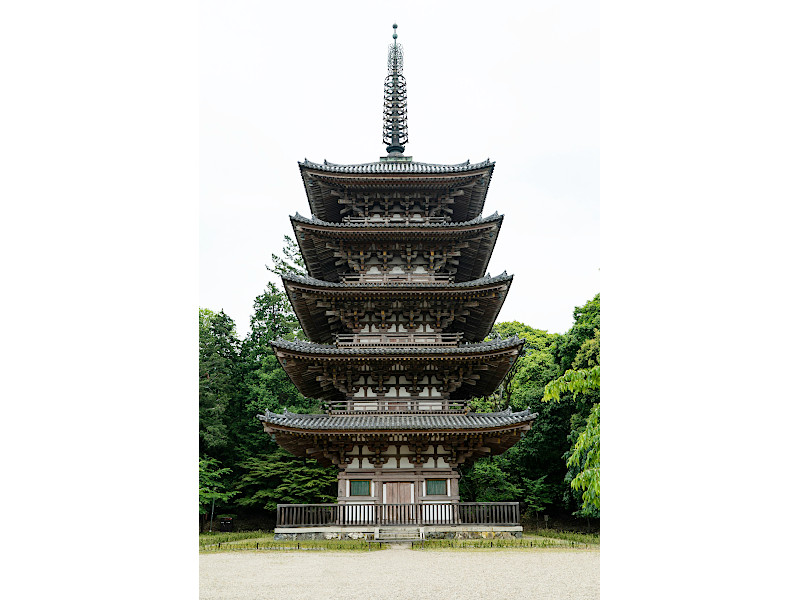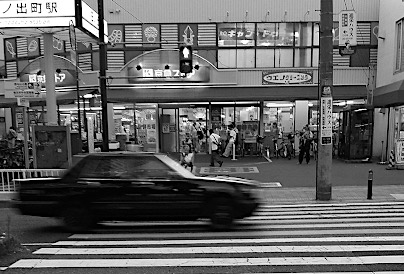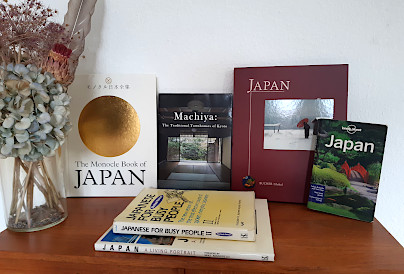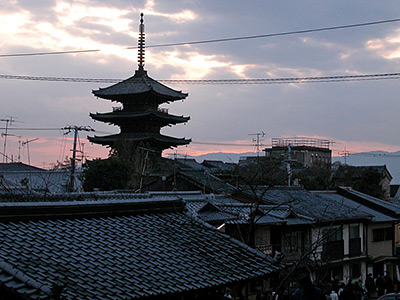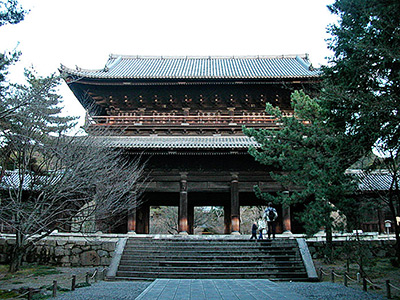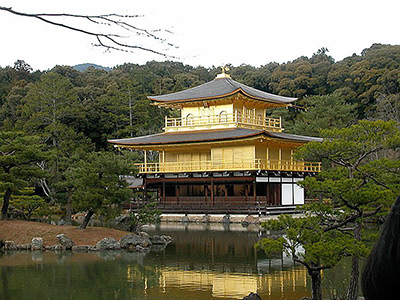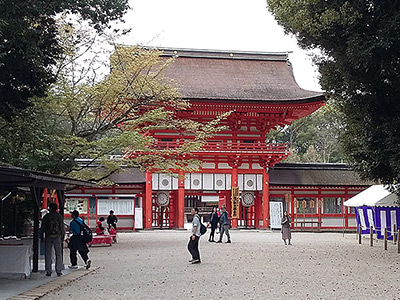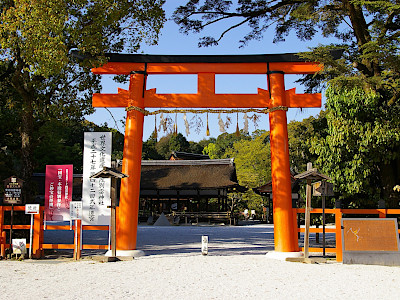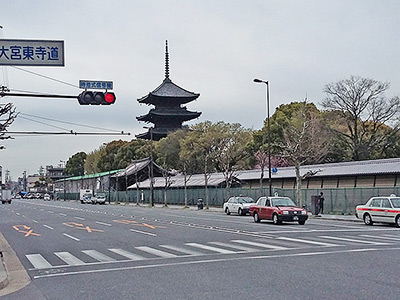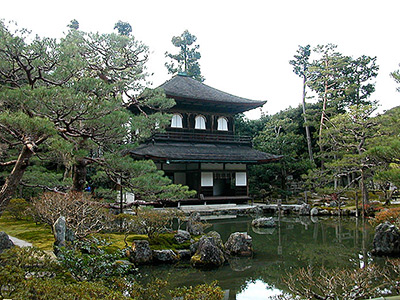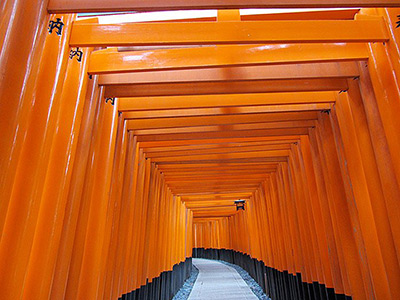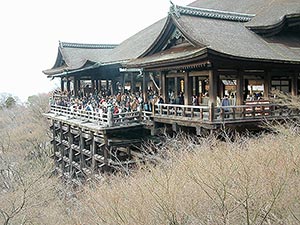Daigoji Temple in Kyoto
This post can contain affiliate links, which means that we may receive a small commission if you make a purchase using these links.
Facts & Figures
Daigoji Temple belongs to the seventeen Historic Monuments of Ancient Kyoto, and these are part of the UNESCO World Heritage Site list. It is the head temple of the Daigo school of Shingon Buddhism. Daigoji is located in the southeast of central Kyoto. The temple complex, one of the largest in Kyoto, includes more than 80 buildings and covers a huge area of Mount Daigo (848 meters), including its summit. The temple grounds are divided into 2 parts, which are Kami-Daigo (upper part) and Shimo-Daigo (lower part).
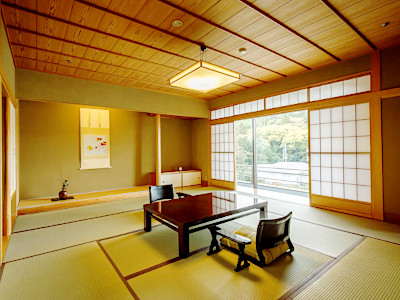 Explore Ryokans in Kyoto >
Explore Ryokans in Kyoto >
Ryokans are the perfect way to discover old Japanese culture and traditions.
Most visitors stay in the lower part, but it is worth walking up the mountain for 1 hour to reach the Kami-Daigo (upper part). The 38-meter high five-story pagoda (goju-no-to), Kondo (main hall), and other buildings are designated National Treasures of Japan. Daigo-ji belongs to one of the best cherry blossom spots in Kyoto. More than 1000 cherry trees can be found within the temple complex.
- Daigoji Temple - Shimo-Daigo (lower part) with Sanboin, Garan (Kondo Hall, Pagoda), Reihokan Museum:
- Opening Hours - 9:00 am to 5:00 pm (from 1st of March to 1st Sunday of Dec)
- Opening Hours - 9:00 am to 4:30 pm (from Monday following the first Sunday of Dec to end of Feb)
- Closed - never, open every day
- Admission Fee Sanboin Garden + Garan - 1000 yen (Adults), 700 yen (Middle and High School Students), free (Children)
- Admission Fee other museums/buildings - each 500 yen (Adults)
- Admission Fee for combined ticket (only in spring available) for Sanboin Garden, Garan, Reihokan Garden - 1500 yen (Adults), 1000 yen (Middle and High School Students), free (Children)
- Kami-Daigo (upper part):
- Opening Hours - 9:00 am to 4:00 pm (from 1st of March to 1st Sunday of Dec)
- Opening Hours - 9:00 am to 3:00 pm (from Monday following the first Sunday of Dec to end of Feb)
- Closed - never, open every day
- Admission Fee - 600 yen (Adults), 400 yen (Middle and High School Students), free (Children)
My tips for local activities
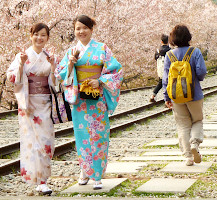
How about exploring the best parts of my favourite city Kyoto with a local guide? The personalized tour by our partner GetYourGuide can take between 2 - 8 hours. For more details check out this page >
History
The Daigoji Temple complex in Kyoto was built by the order of monk Rigen-Daishi (832 - 909), also known as Shobo, in 874 during the early Heian period (794 - 1185). Legend says that he discovered on top of Mount Daigo a well with spiritual water named Daigo and that the local god Yokoo Daimyojin gave him this vision. Everything started with a small hermitage but many emperors supported the temple and over time it grew to its current size. The whole temple complex was destroyed during the Onin War (1467 - 1477). The only survivor was the Goju-no-to (five-story pagoda). It took till 1606 before most of the structures were rebuilt. Daimyo Toyotomi Hideyoshi (1537 – 1598) held his well-known cherry blossom viewing party (Daigo no hanami) at Daigoji Temple. He by himself planted 700 of the existing 1000 cherry trees. A forest fire in 1939 destroyed the Buddhist Texts Library and Juntei Hall. Juntei-do was rebuilt in 1968. The temple was designated as a UNESCO World Heritage Site in 1994.
Location

Daigoji Temple is located within the Fushimi Ward in the southeastern part of Kyoto at the base of Mount Daigo.
Address: 22 Higashioji-cho, Daigo, Fushimi-ku, Kyoto, 601-1325
How to get to Daigoji Temple?
- 10min walk from Daigo Station on the Tozai Subway Line to Daigoji Temple
Sightseeing spots at the Daigoji Temple area
within Shimo-Daigo (lower part):
Sanboin - This temple was the living quarter of the head priest. Sanboin dates back to 1115. The current structure, which includes the amazing landscape garden, was built in 1598 by the order of daimyo Toyotomi Hideyoshi. The architectural style is typical for the Momoyama period (1568 - 1600). The building houses many important Cultural Assets and National Treasures, like the Omote-shoin building. The wall paintings are a must-see during your visit. Read more >
Kondo Hall (Golden Hall) - The main hall is located in the Shimo-Daigo (lower part) and was constructed in 926 by the order of Emperor Daigo (885 - 930). In the year 1599, the current structure was relocated from Yuasa in Kishu (Wakayama prefecture) to this place by the wish of daimyo Toyotomi Hideyoshi (1537 – 1598). The Kondo Hall houses the seated statue of the Yakushi Buddha. The Medicine Buddha offers protection from disasters and spiritual and physical healing.
Goju-no-to - The five-story pagoda has a height of 38 meters. Its top (Sorin) alone has a height of 13 meters. It is the oldest wooden building in Kyoto and the only structure that survived the damage to the Daigoji Temple during wars and fires. The construction phase started by the order of Emperor Suzaku (921 – 952) in 936 and was finished in 951. Goju-no-to was dedicated as a resting place for the soul of Emperor Daigo (885 – 930). It is not open to the public.
Niomon Gate - The impressive two-storied gate dates back to 1605. It was rebuilt after a huge fire.
Bentendo Hall - This hall, located next to a pond, is the most scenic spot during the autumn season. When the surrounding maple and ginkgo leaves turn in a wonderful red and yellow. Bentendo is dedicated to the goddess of knowledge and liberal arts known as Benzaiten (Sarasvati).
Reihokan Museum - In the treasure house you can enjoy a huge number of historical documents and art objects like paintings and statues. With 150000 items it is the largest collection in Japan.
Trail to the Kami Daigo - After you climb up the steep mountain for 1 hour you will get rewarded with amazing views as far as Osaka. Also, more wooden temple buildings can be visited there.
within Kami-Daigo (upper part):
Nyonindo (Hall for Women) - In the past women were not allowed to go up holy mountains. The hall was used to worship women.
Junteido - Inside the building can be seen the image of Kannon (Goddess of Mercy).
Seiryu Gongengu - The Shinto shrine was built in 1434 and watch out for the sacred spring (Daigo-Sui) discovered by monk Rigen-Daishi, also known as Shobo.
Yakushido - The structure has the status of a National Treasure and was built in 1121. It houses an Image of Yakushi Nyorai (Buddha of healing). The statue was carved in 907.
Nyoirindo, Godaido, Kaisando (Founder's Hall) - These buildings date back to the end of the 17th century.
Festival & Events in Kyoto (dates can change without notice)
April
Miyako Odori (1st - 31th)
The traditional annual spring dance of the Kyoto district Gion Kobu performed by Geiko and Maiko is a must-see on your Kyoto visit. Don't miss the most popular dances the Miyako Odori "Cherry Blossom Dances" or "Dances of the Old Capital" at the Gion Kobu Kaburenjo Theater (located close to Gion Corner).
Hotaiko Hanami Gyoretsu at Daigoji Temple (14th)
This event is in memory of the largest tea and cherry blossom party from 1598 held by daimyo Toyotomi Hideyoshi for 1300 guests. Enjoy the procession (150 participants wearing historical costumes), performances, and party which last from 1:00 pm - 3:00 pm.
May
Aoi Matsuri (15th)
The highlight of this festival is a large parade from the Imperial Palace through the Shimogamo Shrine to the Kamo Shrines. More than 500 people wearing aristocratic costumes from the Heian Period (794 - 1185). The Aoi Matsuri belongs with the Gion Matsuri and Jidai Matsuri as the three most famous festivals in Kyoto.
July
Gion Matsuri (whole month)
The month of July is full of different events like the Yoiyama - Kyoto's Magical Night (locals in kimonos look at the giant Gion floats the day before the parade) or the famous Yamaboko Junko (float procession on the 17th of July).
October
Jidai Matsuri ("Festival of Ages") (22nd)
People celebrate with a large parade between Imperial Palace to Heian Shrine the anniversary of the foundation of Kyoto. App. 2000 participants wearing historical costumes from different time periods. Enjoy this great festival which lasts around 2 hours. Illumination event at Kodai-ji (end of October - beginning of December)
Where to stay in Kyoto?
Day trips from Kyoto:
My 100 Best Moments in Japan
I have visited Japan nearly every year since 2004. This is my collection of the 100 best moments in my favorite country. Enjoy the pictures and I hope you will start your own journey soon.
Find out more >
Books about Japan
Reading books is a great source of inspiration for me. Check out my recommended list of books about the fascinating country Japan.
My Book recommendations >

